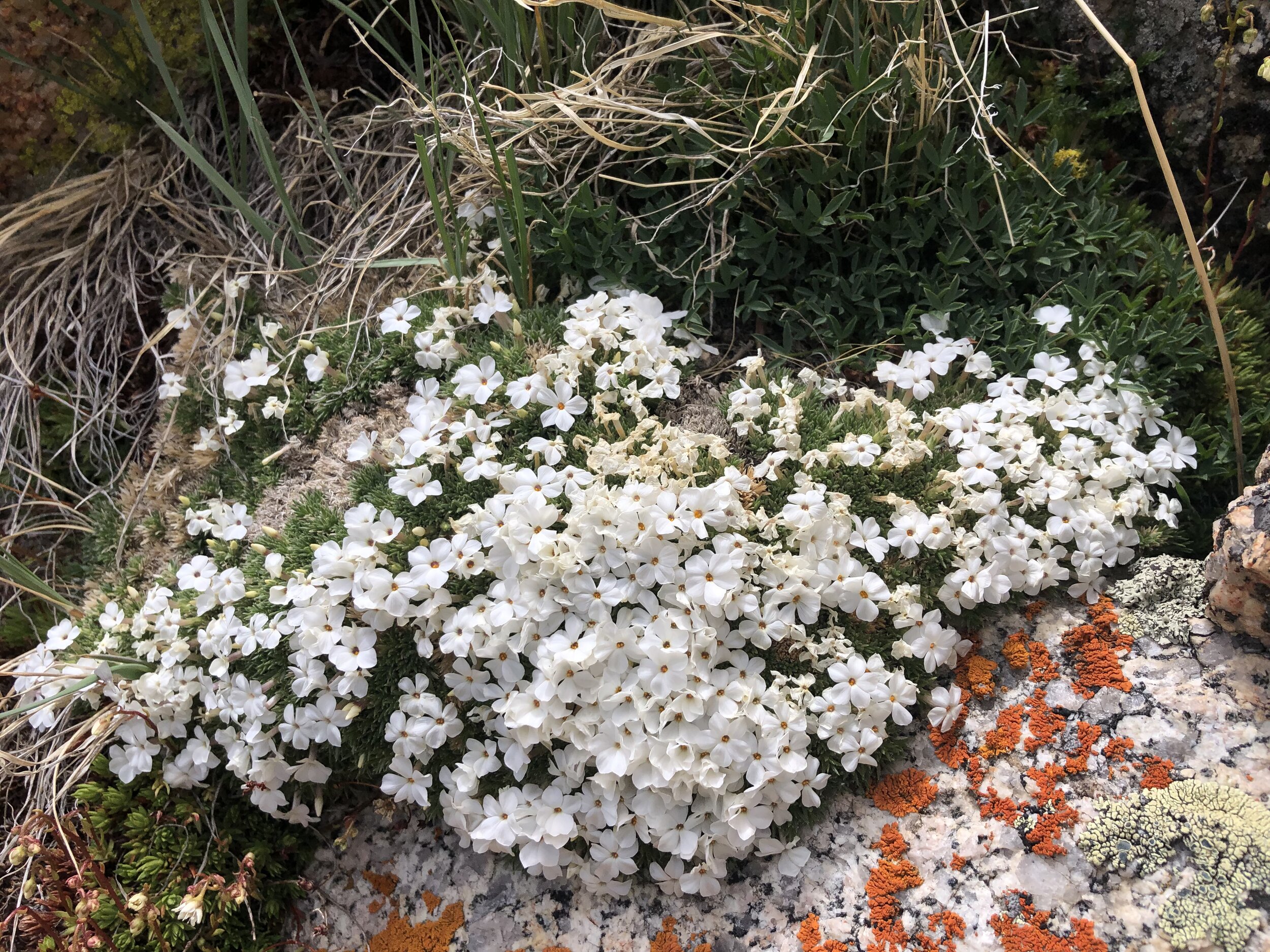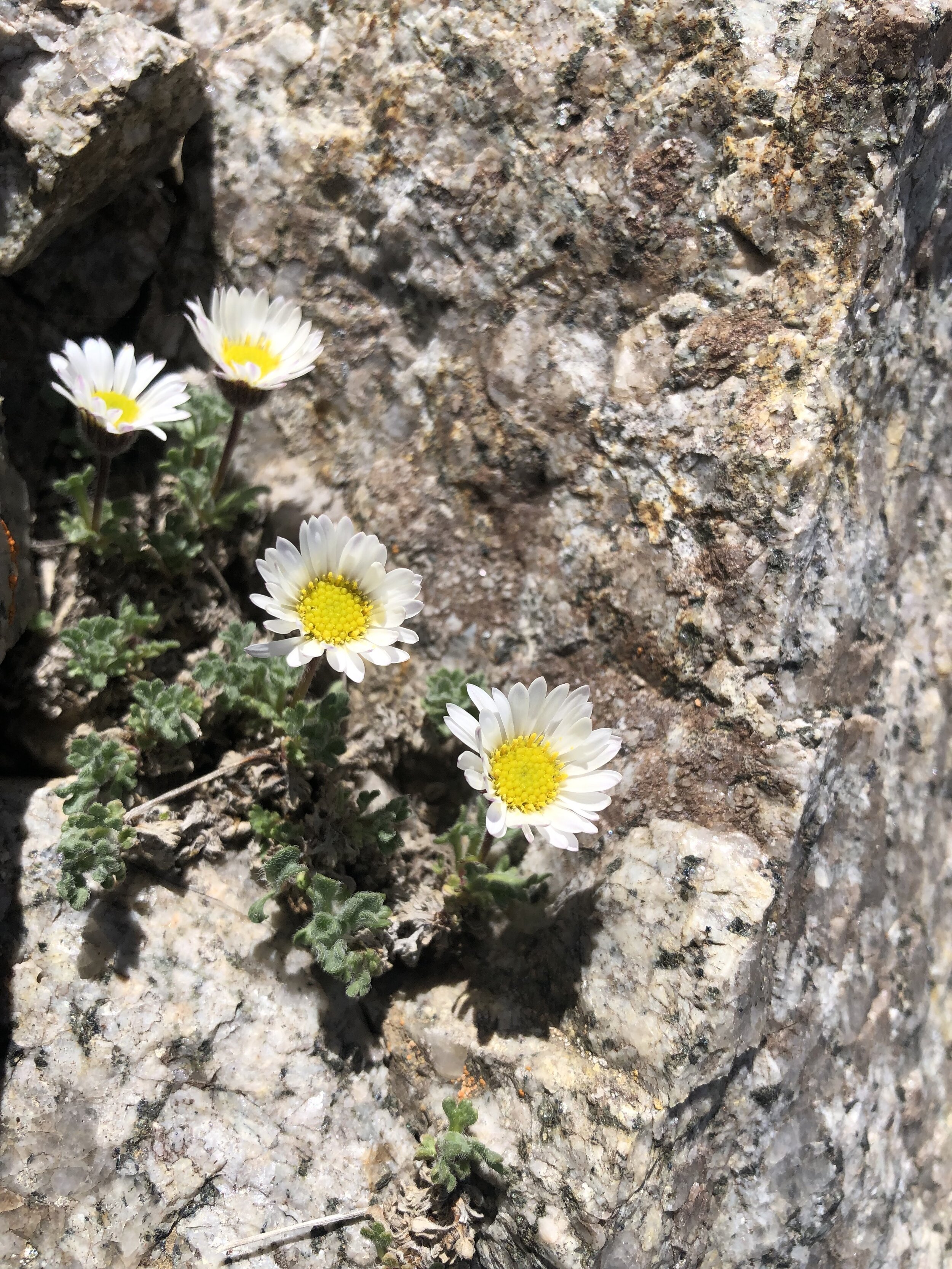Stellaria longipes, July 8, 2021
S. longipes, summit, 12,200’, July 12, 2021
Common & scientific name
Long-stalked starwort, Stellaria longipes
Family
Pink, Capryophyllaceae
Location
Mountain Boy, 12,600’
Fun, weird, helpful, or little known fact
This oh-so-delicate wildflower, standing just a few inches tall on a hairless, slender stalk with widely-spaced, opposite, grass-like leaves, can be found throughout the subalpine and alpine but seems to favor rocky outcrops or meadows streamside. “Stellaria” means “star” and “longipes” means long-limbed. At last, an aptly named flower!




































